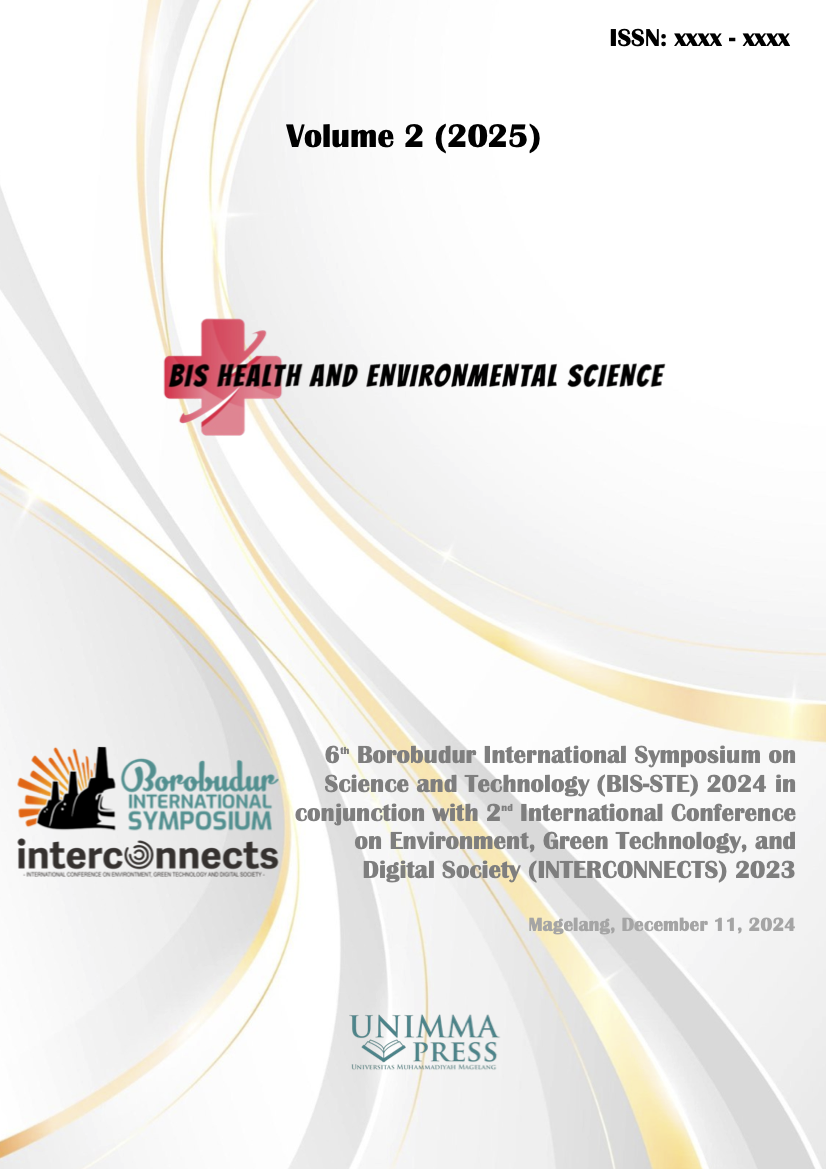Comparative analysis of antioxidant activity in arabica coffee (coffea arabica l.) through various post-harvest processes: Luwak, honey, fullwash, natural
Keywords:
Arabica coffee, Luwak, Honey, Fullwash, AntioxidantsAbstract
Arabica coffee beans exhibit high antioxidant activity, measuring 128.8±18.7 µg TE/mg. Post-harvest processing of coffee beans can influence antioxidant activity, TFC (Total Flavonoid Content), and TPC (Total Phenolic Content) due to the fermentation processes involved. This study aims, firstly, to determine whether there are differences in antioxidant activity across various post-harvest processes of Arabica coffee. Secondly, it seeks to identify the process that yields the highest antioxidant activity in Arabica coffee. Thirdly, it aims to determine the highest TFC in Arabica coffee, and fourthly, to identify the highest TPC in Arabica coffee. The research utilized an experimental method with three replications. The independent variable was the post-harvest processing methods of coffee, while antioxidant activity was measured using the DPPH (2,2-diphenyl-1-picrylhydrazyl) method, TFC was measured using the aluminum chloride (AlCl3) method, and TPC was measured using the Folin-Ciocalteu method. The results showed significant differences in antioxidant activity. Arabica coffee processed using the honey method exhibited the highest antioxidant activity, with an IC50 value of 76.31 ppm, categorized as very strong. Post-harvest processing was found to influence antioxidant activity in honey and civet (luwak) coffee. Civet coffee had the highest TFC, measuring 1.40 mg QE/g extract, while Arabica coffee processed using the full-wash method had the highest TPC, measuring 83.47 mg GAE/g extract. In conclusion, post-harvest processes such as honey and civet significantly affect antioxidant activity, with values of 76.31 ppm and 164.05 ppm, respectively. The honey process produced coffee with the highest antioxidant activity (IC50 76.31 ppm). The post-harvest process for civet coffee resulted in the highest TFC, measuring 1.40 mg QE/g extract.
References
[1] A. Wibowo, “Produksi dan kualitas kopi arabika di Indonesia,” J. Agribisnis dan Teknol. Pertan., vol. 32, no. 1, pp. 12–19, 2019.
[2] R. N. V Antezana and G. I. L. Mercado, “Effect of processing methods (washed, honey, natural, anaerobic) of catimor coffee on physical and sensory quality in Alto Inambari, Peru,” Coffee Sci., vol. 18, no. 182111, pp. 1–10, 2023.
[3] L. Febrina, N. Happyana, and Y. M. Syah, “Metabolite profiles and antidiabetic activity of the green beans of Luwak (civet) coffees,” Food Chem., vol. 355, pp. 1–9, 2021.
[4] E. I. Wigati, E. Pratiwi, T. F. Nissa, and N. F. Utami, “Uji karakteristik fitokimia dan aktivitas antioksidan biji kopi robusta (Coffea canephora Pierre) dari Bogor, Bandung, dan Garut dengan metode DPPH (1,1-diphenyl-2-picrylhydrazyl),” FITOFARMAKA J. Ilm. Farm., vol. 8, no. 1, pp. 53–59, 2019.
[5] C. E. Dhurhania and A. Novianto, “Uji kandungan fenolik total dan pengaruhnya terhadap aktivitas antioksidan dari berbagai bentuk sediaan sarang semut (Myrmecodia pendens),” J. Farm. dan Ilmu Kefarmasian Indones., vol. 5, no. 2, pp. 62–68, 2018.
[6] A. Farah and C. M. Donangelo, “Phenolic compounds in coffee,” Brazilian J. Plant Physiol., vol. 18, no. 1, pp. 23–36, 2006.
[7] Y. Wibowo and C. B. Palupi, “Analisis nilai tambah pengolahan biji kopi arabika (studi kasus: Rumah Kopi Banjarsengon, Jember),” J. Agroteknologi, vol. 16, no. 1, pp. 37–48, 2022.
[8] L. Gobbi, L. Maddaloni, S. A. Prencipe, and G. Vinci, “Bioactive compounds in different coffee beverages for quality and sustainability assessment,” Beverages, vol. 9, no. 1, pp. 1–18, 2023.
[9] M. Haile, H. M. Bae, and W. H. Kang, “Comparison of the antioxidant activities and volatile compounds of coffee beans obtained using digestive bio-processing (elephant dung coffee) and commonly known processing methods,” Antioxidants, vol. 9, no. 5, pp. 1–21, 2020.
[10] I. W. Pebriati and A. N. Diana, “Uji antioksidan ekstrak etanol biji kopi arabika (Coffea arabica L.) lereng Gunung Argopura Kabupaten Jember pada berbagai kondisi penyangraian,” J. Ris. Kefarmasian Indones., vol. 5, no. 2, pp. 284–298, 2023.
[11] Y. P. Utami, Imrawati, and J. A. Barrang, “Studi aktivitas antioksidan ekstrak etanol biji kopi robusta (Coffea canephora var. robusta) dan biji kopi arabika (Coffea arabica L.) dengan metode DPPH,” J. FARBAL, vol. 7, no. 1, pp. 19–28, 2019.
Downloads
Published
Conference Proceedings Volume
Section
License

This work is licensed under a Creative Commons Attribution-NonCommercial 4.0 International License.

